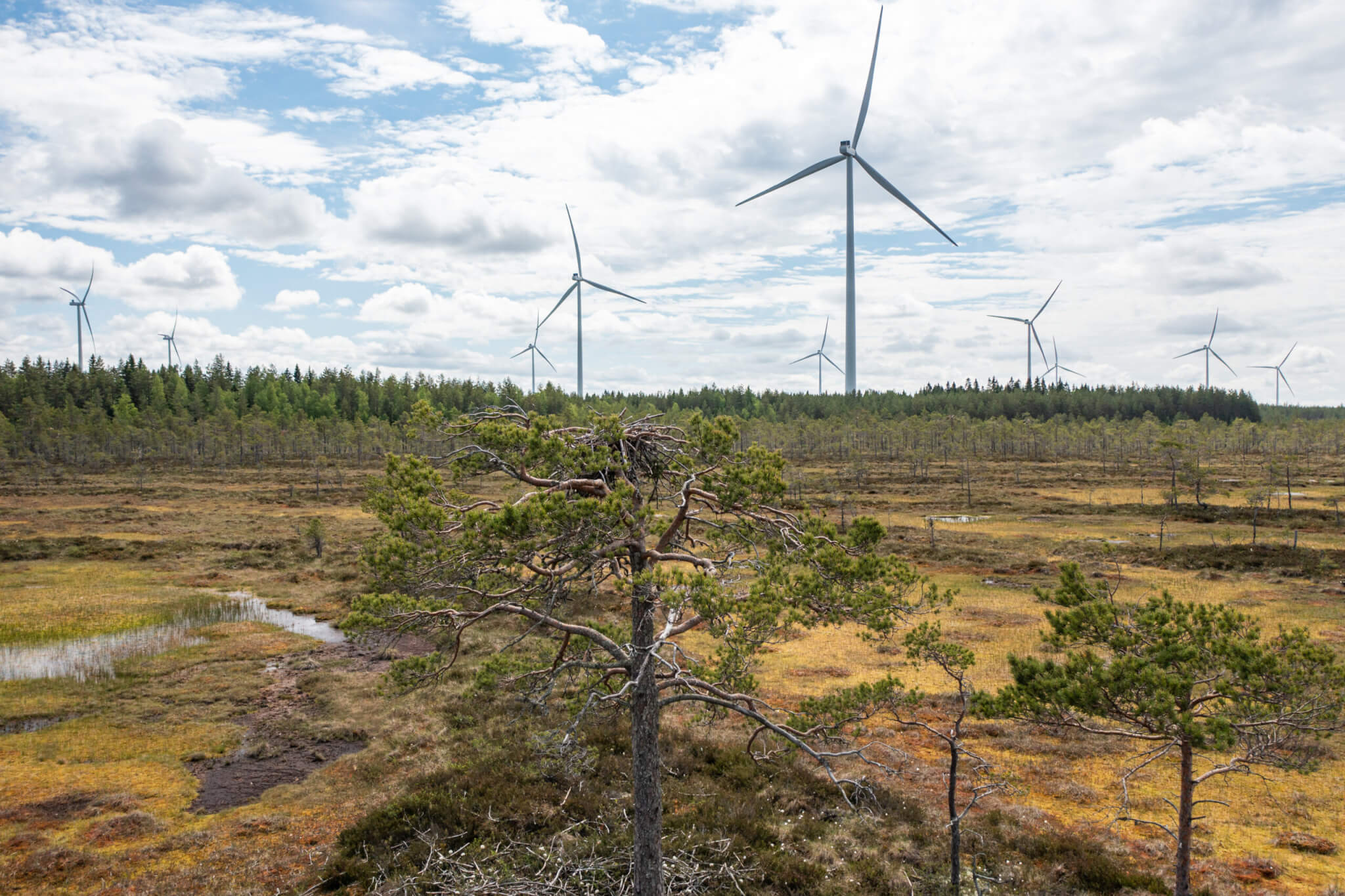According to the Prime Minister Orpo’s Governmental Programme (in Finnish) published on Friday 16th of June, Finland is committed to the previously defined climate targets. In addition, the Governmental Programme outlines that the operating conditions for wind power will be developed and that the increase in electricity production will be ensured putting emphasis also on the public acceptance. There is also a desire to build wind power in different parts of the country and, to a significant extent, also offshore. The competitive position of Finnish offshore wind power in relation to neighbouring markets will be strengthened.
The Governmental Programme aims to attract new electricity-intensive industries to Finland and to export high-processed products produced with clean electricity. These policies will also support the wind energy sector. In the long run, increasing the level of processing in Finland will foster the acceptability of wind power compared to exporting bulk.
The Government will update the Energy and Climate Strategy, and the carbon-neutrality roadmaps of different industry sectors will also be updated. The Government will also encourage all sectors to draw up biodiversity maps, which will provide an understanding of the dependence of economic activity on nature and the added value it provides (ecosystem services).
Energy, previously the responsibility of the Minister of Economic Affairs and Employment, is now the responsibility of the Minister of Climate and the Environment. Mr Kai Mykkänen was announced yesterday (on Sunday) by the Coalition Party as the Minister for Climate and Environment, which is a really positive nomination for wind power and the wider energy sector as Mykkänen has a deep understanding about energy, and FWPA has very established connections to him and his current advisors.
The Governmental Programme contains many positive things that directly affect wind power, such as:
- Pushing further the efforts for better coexistence of wind power and military activity, as suggested in the report by Mr Arto Räty earlier this year
- Establishing a high-level co-operation group to ensure both the implementation of measures that can be implemented quickly and to form a shared longer-term vision of the potential for siting wind power, which would support the planning of investments.
- Amendment of the Compensation Law
- Extending the right to build transmission lines that serve several electricity producers to grid companies.
- Reduction of duplicate complaints.
In addition, the Governmental Programme contains less direct/indirect positive elements affecting wind power, such as
- Ensuring resources and better management of Administrative Courts
- Resourcing sufficiently the permitting of electricity grid investments
- Reducing the possibility of complaints between authorities
- Promoting hydrogen projects in various ways and investing in adding value
- The Government will create a strategic vision of the electricity transmission needs in different regions of Finland in the 2030s and will launch the necessary measures to remove bottlenecks that slow down investments.
- Promoting co-location of large-scale energy-intensive investments and electricity generation so that excess investment in transmission systems could be avoided via off-grid solutions.
- Incentives will be created to locate generation that is dependent on the grid in locations that are advantageous for existing transmission capacity, future construction, and overall optimization of the energy system.
- The Government will promote more transmission lines to the Nordic and Baltic countries to ensure the security of the electricity supply.
Offshore wind power in the Government Programme:
- Government sets an ambitious target for offshore wind power capacity in 2035.
- The Government will create a competitive advantage for Finland over the Baltic Sea countries to attract large offshore wind projects to Finland.
- The Government will promote a predictable and supportive operating environment and smooth project development and construction both in the EEZ and in territorial waters.
- Without delay, the regulation, and the operating framework for offshore wind power in EEZ will be clarified by implementing a legislative project to define the legislation, permitting procedures, compensation, and tax issues. The rules shall be in line with offshore projects in territorial waters and on shore.
- Incentives will be created to locate offshore wind farms in a way that is favorable to other uses of sea areas, such as shipping and fishing, and minimizes the inconvenience.
- Ensure that the above issues are taken into account in the licensing process.
- The Government will clarify the lead responsibility of the Ministry of Employment and the Economy in the policy on energy use in the maritime area.
The Governmental Programme also include some entries which need to be followed closely to ensure that the implementation is sensible in a way that adds up the acceptability of wind power without endangering the feasibility of wind power construction and production. It is also important that the new regulation does not discriminate against wind power in relation to other forms of generation and activities. We need a level playing field with other energy sources.
- Definition and introduction of national distance rules.
- Reform of the Law on Redemption, strengthening the rights of the landowner.
- New responsibilities for wind power producers in securing the balancing power through their own production or through participation in capacity mechanisms.
- Introduction of guarantees for dismantling and restoring wind farms
In addition, the Governmental Programme included the following entries that affect or may affect wind power regulation or the rest of the policy environment:
- Lowering the EIA threshold to cover all industrial projects, and strengthening the landscape assessment.
- Environmental permitting (permitting, monitoring and governance; Regional State Administrative Agency “AVI” and the Environment Department of the “ELY”, The Centres for Economic Development, Transport and the Environment) to be legally integrated into a national entity acting as a single authority.
- Adequate resourcing of the permitting authorities.
- The Government will assess the benefits of the current priority procedure under existing legislation and the fast-track handling of appeals in administrative courts and make the necessary legislative changes on that basis (FWPA would like to see building permits included in the priority procedure).
- Finland aims to achieve a 10 % share of EU production of pure hydrogen and at least the same share of further use of hydrogen.
- Ensure smooth permitting procedures and processing times for large industrial investments.
- Strengthening cooperation between vocational education & training and industry to make vocational education and training more responsive to the needs of companies. Reform the provision of training to better meet the needs of industry and labour, taking into account the needs of the (export) industries.
- Universities and high-level R&D are encouraged to seek solutions to the major challenges of our time, such as the transformation of energy technologies.
Regarding solar power, the Governmental Programme states that:
- Promote investments in solar power in locations that enable appropriate land use considering the possibilities to balance the intermittent production of renewable electricity production methods.
- Solar power installations will be directed to the built environment, areas of former peat production and wasteland, avoiding significant use of fields and forest land.
- The Government will ensure that the regulatory and permitting procedures of solar farms are consistent, flexible, and predictable across the country.
- Review the determination of the taxable value of solar power plant structures, ensuring that solar power is not subject to a disproportionately higher property tax than wind power.
In addition, the Governmental Programme includes entries on hydropower, bioenergy, and nuclear. The Governmental Programme can be described as pro-nuclear.
FWPA’s Lobbying Committee, the Offshore Committee and the board will align on how to start influencing and how to prioritize the wind power-related matters stated in the government programme.


